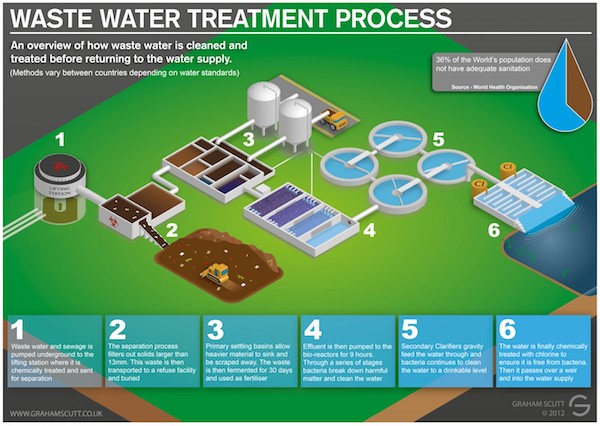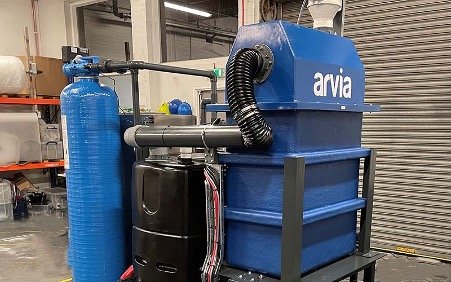4 Easy Facts About Residential Water Treatment System Explained
Table of ContentsGetting My Residential Water Treatment System To WorkNot known Facts About Residential Water Treatment SystemOur Residential Water Treatment System PDFsUnknown Facts About Residential Water Treatment System
5)5. 1 The demand for large-scale water therapy, Water therapy is the process of eliminating all those compounds, whether biological, chemical or physical, that are possibly harmful in water for human as well as residential usage. This therapy aids to create water that is safe, tasty, clear, colourless as well as odourless. Water also requires to be non-corrosive, indicating it will not cause damage to pipework.This creates a need for large quantities of secure water to be provided accurately and consistently, and also this need is expanding. As city populaces raise, there is a need to discover brand-new resources to meet the growing demand. If groundwater is offered this can typically be made use of with minimal therapy yet any surface water resource will certainly require to be treated to make it risk-free.
6 explains how this computation is made yet first you will consider the main stages in the water therapy procedure. 5. 2 Phases in large-scale water therapy, There are commonly 7 steps (Number 5. 2) in large-scale water treatment for metropolitan community supply of water (Abayneh, 2004). Each of the steps will be defined consequently in this section.

See This Report about Residential Water Treatment System
Here the water is delicately mixed by paddles in a flocculation basin (Number 5. 5) and the flocs enter into contact with each various other to form larger flocs. The flocculation container commonly has a number of compartments with lowering mixing rates as the water breakthroughs with the container (Figure 5.
6(b)) for numerous hours for sedimentation to happen. The product built up at the end of the storage tank is called sludge; this is eliminated for disposal. 5.2. 5 Filtering, Filtration is the procedure where solids are separated from a fluid. In water therapy, the solids that are not separated out in the sedimentation storage tank are removed by passing the water through beds of sand and gravel.
7), with a flow rate of 48 cubic metres per square metre of filter surface per hour (this is created as 48 m3 m2 h1) are commonly used. When the filters have plenty of trapped solids, they are backwashed. In this procedure, tidy water and also air are pumped in reverse up the filter to remove the trapped impurities, as well as the water bring the dirt (described as backwash) is pumped right into the sewage system, if there is one.
6 Chlorination, After sedimentation, the water is disinfected to remove any kind of staying pathogenic micro-organisms. The most typically used anti-bacterial (the chemical utilized for sanitation) is chlorine, in the type of a liquid (such as sodium hypochlorite, Na, OCl) or a gas.
More About Residential Water Treatment System
The amount why not try this out of chlorine left after this is called residual chlorine. This stays in the water all the method with the circulation system, securing it from any micro-organisms that may enter it, up until the water gets to the consumers. World Health And Wellness Organization Guidelines (WHO, 2003) recommend an optimum residual chlorine of 5 mg l1 of water.

7 Additional treatment, Supplementary therapy might often be needed for the benefit of the populace. One such circumstances is the fluoridation of water, where fluoride is included in water. It has been specified by the World Wellness Company that 'fluoridation of water products, where feasible, is one of the most efficient public health and wellness procedure for the avoidance of dental decay' (WHO, 2001).

Residential Water Treatment System for Beginners
What does excess fluoride in the water lead to? The easiest method of doing this is to mix the high-fluoride water with water that has no (or really little) fluoride so that the last blend is risk-free.
The two chemicals are included to and also swiftly blended with the fluoride-contaminated water and also after that the water is mixed carefully. 5.3 Administration of wastes from water therapy plants, From the water treatment process that you have just examined, make a list of the different wastes that develop.
In the latter it is included in the incoming sewer, where it can aid settlement of solids. The backwash from the sand filter is discharged right into the sewer or returned to the river after this page settlement of click for more info solids. Packaging waste such as chemical drums can be gone back to the supplier for reuse.
5.4 Sustainability as well as durability in water treatment, In Research Session 4 you review some aspects that can affect the sustainability of a water resource. For instance, reducing soil disintegration by growing trees as well as retaining vegetation can lower the quantity of silt that accumulates in a storage tank and lengthen its life.